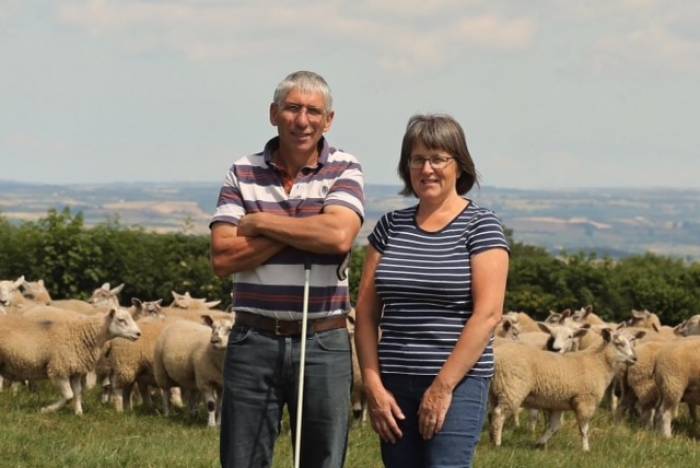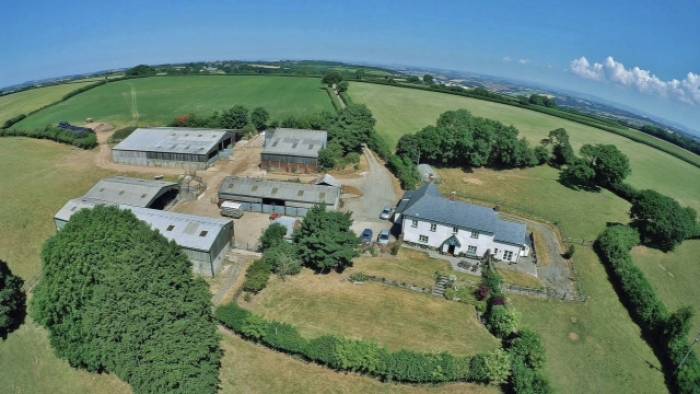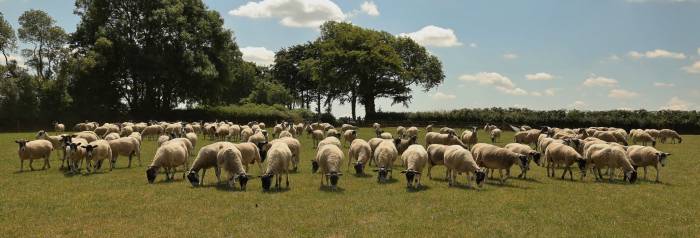Bryan and Liz Griffiths run 800 sheep and some finishing cattle on 320 acres (130ha) at Burrington, Devon. Over the years they have had issues with triclabendazole-resistant fluke and with buying in border disease – so it’s not surprising their biosecurity protocols are first rate.
In 2012, Liz and Bryan discovered triclabendazole resistant fluke in their ewe lambs. Bryan comments: “In spite of dosing with triclabendazole through the autumn, we were still seeing one or two ewe lambs deteriorate. When one died, we decided to conduct a simple post mortem to see if we could figure out the route cause. When I squeezed the liver, it oozed with what I thought was black treacle, which soon turned into hundreds of those stingray type flukes. I was lost for words.”
The ewe lambs had been drenched four weeks before discovering the fluke, so neither Bryan or Liz could believe what they were seeing. Bryan says: “It took time to dawn on us and, sadly, we did lose a few lambs until we finally realised we had resistance to the drench we had been using”.
Unlike others flukicide actives, triclabendazole (TCBZ) kills all ages of fluke from immature right through to the adult stages. In Bryan and Liz’s case, they had resistance to this drench, allowing the fluke to develop to adult stage and causing the swift deterioration in ewe lambs. “The adult flukes had huge suckers, so it’s not surprising the poor things had deteriorated so quickly,” Liz adds.
Finding themselves in a position of being unable to use flukicides able to kill immature fluke, they had to find a solution to the continuous fluke problem in their flock. Bryan and Liz normally house their stock for a minimum of six to eight weeks over winter. They now choose to use this period to target fluke.
Liz says: “As we house for a couple of months before lambing, there should be no immature fluke present inside the ewes by turnout. We now dose with closantel as ewes leave the lambing shed, hopefully eliminating all the fluke present and preventing contamination of the pasture.”
Describing the farm as ‘wet with rushy areas’ – the perfect habitat for mud snails to thrive in – Liz continues: “We seem to have a fluke problem even when it’s dry, as dry weather drives the sheep into the wetter places even more, so there’s always a fluke risk that needs to be resolved,” Liz says.
Bryan adds: “You have to do what’s right on your farm for your individual situation. We chose to find a practical solution to the resistance issue, then we tested it with formal testing the following year using the coproantigen test. We have since adopted the use of closantel into our quarantine procedure, as well as using this active at turnout.”
Other than a single batch of ewe lambs each year (and rams as required), they don’t bring in any sheep onto their farm. They choose to buy their incoming livestock from market. Liz comments: “We are aware of the risk of buying in stock from market, but try to mitigate those risks. We only use a catalogued sale, enabling us to know the source of the stock, ensuring trustworthy, reliable vendors from whom to purchase.”
Bryan continues: “When purchasing new stock, we have strict biosecurity protocols at the market and on return to the farm. Firstly, all animals are treated with two wormers – a clear (3-ML) and an orange (4-AD) oral drench – plus a closantel flukicide. These are given in the pens at the market, in the knowledge the sheep have a long journey ahead and will be empty by the time they get back to the farm.”
By implementing this approach, along with other strict biosecurity procedures and further disease monitoring protocols, Bryan and Liz are able to reduce the risk, enabling them to bring in new blood without compromising the health status of their home flock.


